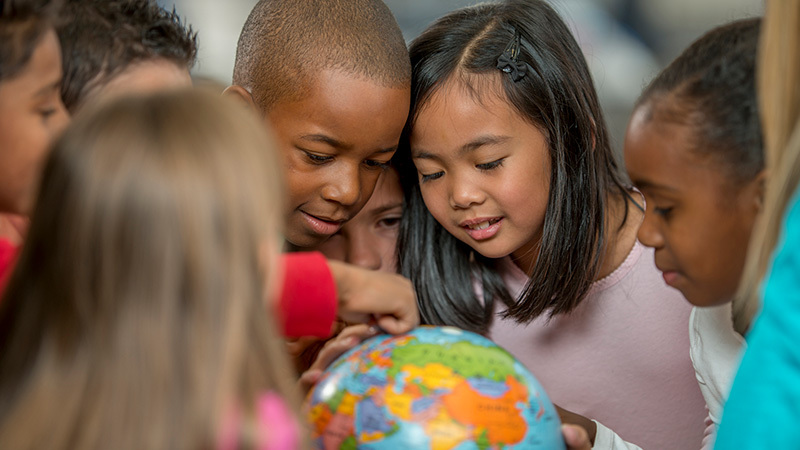Now more than ever, it’s important to recognize and celebrate the diversity we find in our classrooms. While many students associate the month of December with Christmas or Hanukkah, there are actually many other celebrations that happen throughout the world in December.
Below is a partial list of holidays that take place in December as well as some ideas about how to celebrate them in your classroom. To make for an extra special December this year, you can take your students on an imaginary journey around the world and celebrate each holiday based on the region to which it relates!
Holidays Around the World
Las Posadas
Mainly celebrated in Central American countries like Mexico and Guatemala, Las Posadas is a nine-day celebration that lasts from December 16th through 24th. The purpose of the celebration is to honor the journey that Mary and Joseph took in Bethlehem. People walk through the streets carrying lanterns on a pre-planned route and knock on doors “searching for a place to stay.” They then meet at a final destination for a big feast and celebration.
To celebrate Las Posadas with your students, you can team up with other classrooms and plan a school-wide journey around the halls. End the journey with a Central American “fiesta” complete with music, authentic foods like sweetbread and flan, and even party games like a piñata! Education World offers additional activities to celebrate Las Posadas across subjects.
Kwanzaa
Celebrated throughout the United States, Kwanzaa is a week-long celebration that begins on December 26th. In 1966, the holiday was created to connect African Americans with their traditional African roots. Kwanzaa celebrates one principle each day: Unity ( Umoja,) Self-Determination ( Kujichagulia,) Responsibility ( Ujima,) Cooperative Economics ( Ujamaa,) Purpose (Nia,) Creativity (Kuumba,), and Faith (Imani.) A lamp, called a kinara, is displayed with three red candles, three green candles, and one black candle in the middle. Each night, a candle is lit to represent one of the seven principles.
To celebrate Kwanzaa with your students, you can create a classroom kinara and task students or student groups with choosing one principle to present to the class. Students can write a poem, perform an interpretive dance or musical number, create an art piece, or conduct and present research on the history of the principle. You can also check out Scholastic’s classroom Kwanzaa ideas.
Mawlid An Nabi
Celebrated in many countries where there is a large Muslim population, such as Pakistan, India, and Bangladesh, Mawlid An Nabi recognizes the birth of the prophet Mohammed. In some Muslim communities, Mawlid An Nabi is celebrated with feasts and the recitation of poems written to commemorate the prophet’s birth or to remember deceased members of their own families.
This year, Mawlid An Nabi will be celebrated on November 20th. In your classroom, students can write poems in memory of those they may have lost or in honor of someone they greatly admire in their family.
Bodhi Day
Celebrated in countries with a large Buddhist population, such as Thailand, Cambodia, and Myanmar, Bodhi Day is used to honor the day that Siddhartha Gautama reached enlightenment and became the Buddha. Bodhi day is celebrated with multicolored lights lit for 30 days, decoration of Bo or Fichus trees, and a meal of rice and milk.
This year Bodhi Day takes places on January 13th. You can celebrate by having students write one thing they learned this year that helped make them “enlightened.”
Lunar New Year
Celebrated in China and other Asian nations, on February 5th Lunar New Year will ring in of the year of the Fire Rooster. The celebration of Lunar New Year is marked with fireworks, lanterns, joyful music, parades, and the exchange of red envelopes filled with an even amount of money or small gifts.
Students can celebrate the Lunar New Year by exchanging red envelopes with their classmates that are filled with compliments, letters of gratitude, or favorite memories from the previous year. You can also have a mini Lunar New Year feast of Chinese noodles, which represent longevity, or mandarin oranges, which symbolize good luck.
There are many joyful celebrations to be found around the world during the winter season. Have you celebrated others in your classroom?






